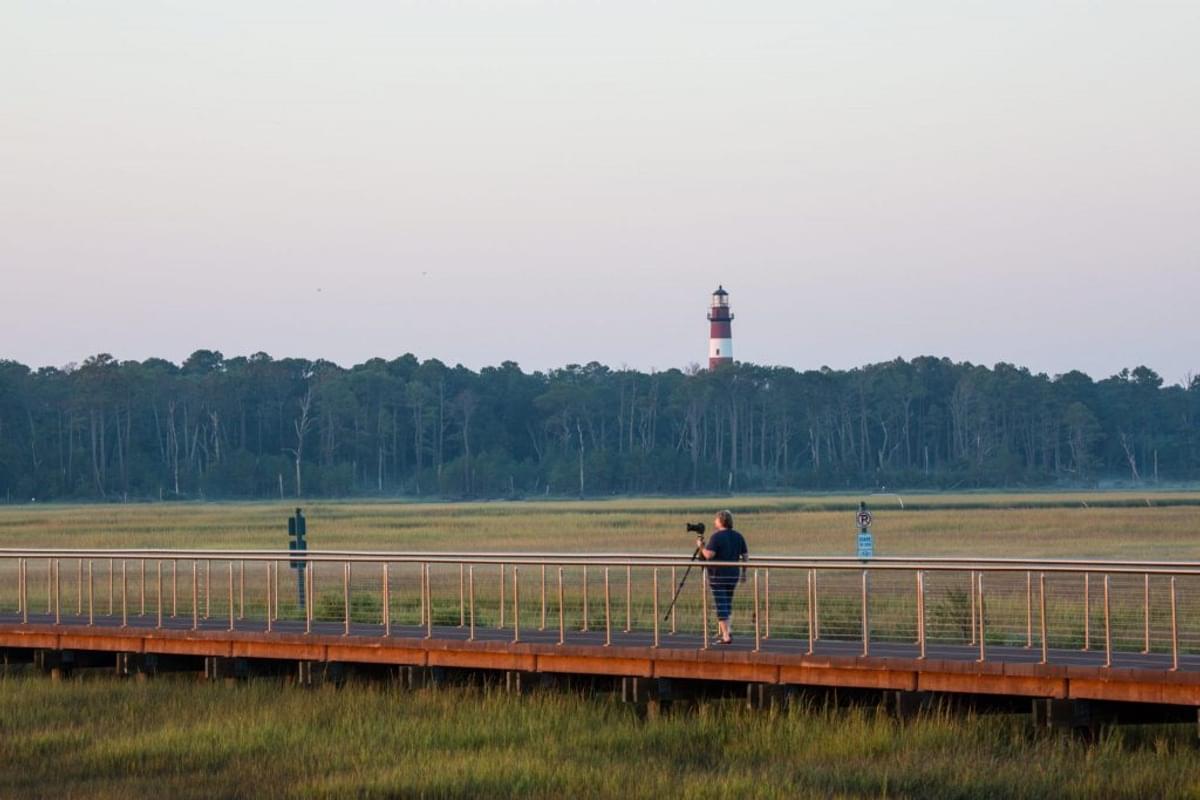Chincoteague NWR--Marsh Trail

Chincoteague NWR--Marsh Trail
Chincoteague, Virginia 23336
Chincoteague NWR Fees TableChincoteague NWR webpage (U.S. Fish and Wildlife Services)
Chincoteague NWR webpage (VA Birding & Wildlife Trail)
Tips for Birding
The mature pines along the Wildlife Loop at this spot are always a good place to start. Brown-headed Nuthatches can be found year-round, while White-eyed Vireos, Eastern Towhees, House and Carolina Wrens sing from the brush. A full complement of woodpeckers is also expected here, including Northern Flickers, Downy Woodpeckers, and Red-headed Woodpeckers. Work your way around the path, stopping at the observation platform. The interpretive signage clues you into "the regulars" but, depending on the tide, you could find a vast array of shorebirds below and raptors overhead, or you could come back empty-handed. High tide is good for herons and other wading birds, and low tide is best for rails and shorebirds.
About this Location
The Marsh Trail is a 0.59mi, u-shaped, foot-traffic-only trail that branches off the Wildlife Loop, traverses a saltmarsh, and returns back to the Wildlife Loop 0.3mi from where you began. The west end of the loop is near the Wildlife Loop Parking, so if you are short on time or want to experience only a snippet of the wildlife loop on foot, this is a good option.
About Chincoteague National Wildlife Refuge
See all hotspots at Chincoteague National Wildlife Refuge
This is one of the most heavily visited refuges in the national wildlife refuge system and acts as a gateway to the accessible barrier islands on the East Coast. A visitor center, bird checklists, beach access, and an array of wildlife species make this one of the nation’s premier sites for easily accessible wildlife viewing.
Administered by the U.S. Fish and Wildlife Service, Chincoteague National Wildlife Refuge is renowned for its diverse bird habitat where more than 320 species are known to use the refuge regularly during migration. It has at least 100 species of birds present at any given time. Shorebird concentrations at Chincoteague are so great during fall migration that it ranks as an important stopover area for migrating birds in the U.S east of the Rockies. The refuge was also ranked second in shorebird diversity among all 450 sites in the International Shorebird Survey in 1985. Chincoteague is also famous for the herds of Chincoteague ponies that were first introduced to the island in the 17th century. Much of the refuge’s operations focus on managing it for the benefit of the diverse wildlife species.
Located on the Indigenous homelands of the Pocomoke and Occohannock people, Chincoteague National Wildlife Refuge protects beach, dune, marsh, and maritime forest habitats. Established in 1943 to protect migratory birds, this refuge is now one of the most visited in the United States. This gem of Eastern Virginia is a birder's paradise, as well as the home of cultural treasures such as Assateague Lighthouse and the world-famous Chincoteague ponies.
Open year-round from dawn to dusk. See the fees table link above for information regarding fees and permits.
Notable Trails
This trail is not fully paved, but it is flat grit and the observation platform is handicapped accessible.
Content from Chincoteague NWR webpage (U.S. Fish and Wildlife Services)
Last updated June 1, 2023
 Assateague Lighthouse from causeway
Assateague Lighthouse from causewayChincoteague Chamber of Commerce